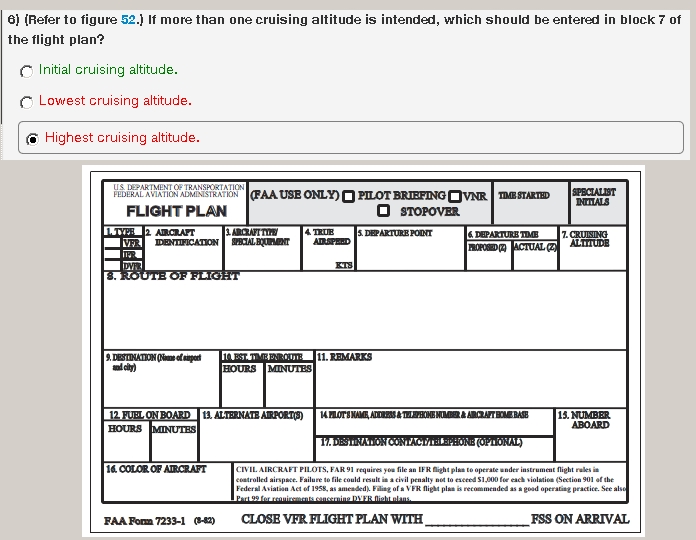eetrojan
Pattern Altitude
Hi all.
I’m a student. Nearly done…
When preparing and filing a VFR flight plan with multiple altitudes between airports (e.g. 3,000 ft MSL for first leg, followed by 8,500 ft. MSL for second leg to destination), my school teaches me to file my box 7 “cruising altitude” with the highest VFR altitude (e.g. 8,500 in my example). The reason given is that should I need to put her down along the way, the higher altitude will correctly causes searchers to expand their search zone based on my glide range. That makes good sense to me, but I want to dig around a bit more.
My memory is that IFR flight plans are filed with the “initial” cruising altitude rather than the highest altitude. True?
I’m aware of 91.153 re the information required for a “VFR flight plan,” but it doesn’t address multiple altitudes and simply identifies “cruising altitude” as part of the required info. I’m also aware of AIM 5-1-1(f) which references “Flight altitude(s)” in the plural. However the official FAA flight plan form seeks only one altitude and, in my limited experience in phone filing a plan with WX-BRIEF, they seem to want only one altitude.
I was hoping to find more info on this topic. Is there a FAR, AIM, FAA, or some other official or semi-official sources that I can read on how to handle multiple altitudes in one flight?
Thanks!
I’m a student. Nearly done…
When preparing and filing a VFR flight plan with multiple altitudes between airports (e.g. 3,000 ft MSL for first leg, followed by 8,500 ft. MSL for second leg to destination), my school teaches me to file my box 7 “cruising altitude” with the highest VFR altitude (e.g. 8,500 in my example). The reason given is that should I need to put her down along the way, the higher altitude will correctly causes searchers to expand their search zone based on my glide range. That makes good sense to me, but I want to dig around a bit more.
My memory is that IFR flight plans are filed with the “initial” cruising altitude rather than the highest altitude. True?
I’m aware of 91.153 re the information required for a “VFR flight plan,” but it doesn’t address multiple altitudes and simply identifies “cruising altitude” as part of the required info. I’m also aware of AIM 5-1-1(f) which references “Flight altitude(s)” in the plural. However the official FAA flight plan form seeks only one altitude and, in my limited experience in phone filing a plan with WX-BRIEF, they seem to want only one altitude.
I was hoping to find more info on this topic. Is there a FAR, AIM, FAA, or some other official or semi-official sources that I can read on how to handle multiple altitudes in one flight?
Thanks!


 Talking to ATC on FF will not be the determinant on whether we get user fees or not. ATC would rather be talking to you than not, especially where you are.
Talking to ATC on FF will not be the determinant on whether we get user fees or not. ATC would rather be talking to you than not, especially where you are.